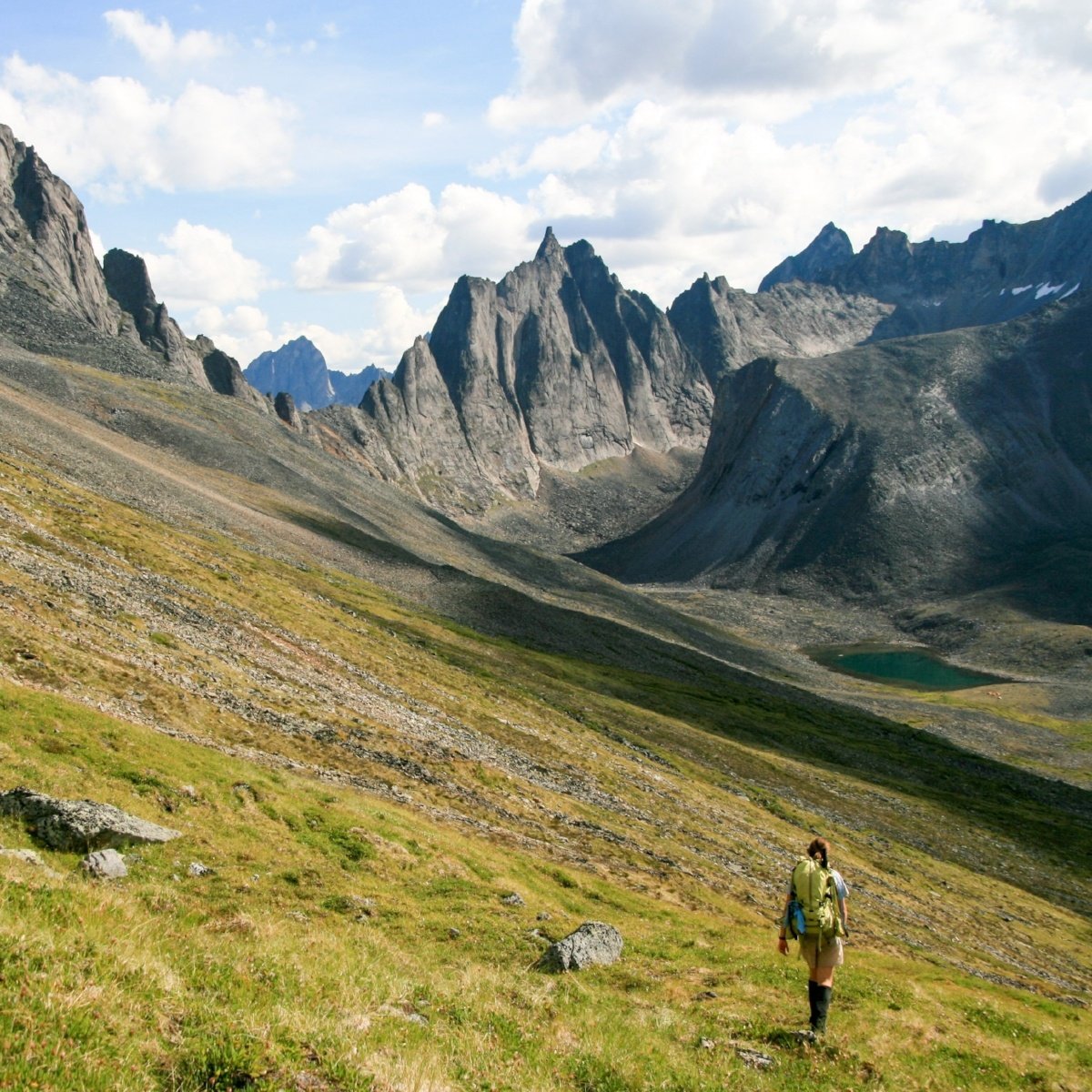The Setting
You and a companion, both proud and confident Wilderness First Responders (WFR), are hiking a wilderness trail when you are passed by a horse pack string led by a young cowboy. You exchange pleasantries and fishing tips. Suddenly one horse nips at another, a horse kicks, and horses seem to be going everywhere. The rider’s horse rears and bucks causing him to fall off the back and land on his head and shoulder.
You immediately verbalize your scene size-up: “The scene appears safe. The weather is warm and sunny. The horses are milling about, no longer in a rodeo. There is one patient. He is on his back. He doesn’t look badly hurt although he appears to be unresponsive.” You put on your gloves and begin your assessment.

Photo by: Kelsey Wicks
Your patient doesn’t respond to, “Hi, I’m a Wilderness First Responder, can I help?” You assume consent and conduct an initial assessment. The patient’s airway appears clear and he is breathing without distress. There is no obvious bleeding and he has a strong radial pulse. You protect the spine because of the mechanism of injury (MOI). There are no obvious injuries to expose and investigate.
SOAP Report
Subjective
The patient is a 25-year-old male who fell off the back of a horse and landed on his head and shoulders. He was not trampled by the horse. Initially unresponsive for a minute, he is now awake and alert. His chief complaint is the pain of embarrassment of falling from his horse. He requests that we allow him to stand, wrangle his horses and continue on his way. It’s hard to keep him from moving and looking for his horses.
Objective
Patient Exam: No injuries are found other than a small bruise on the back of the head. The patient is moving his arms and legs, denies pain on palpation of the spine, and has good circulation, sensation and motion (CSM) in all 4 extremities.
Vital Signs
|
Time |
10:15 am |
|
Level of Responsiveness (LOR) |
A+Ox4 |
|
Heart Rate (HR) |
72, strong, regular |
|
Respiratory Rate (RR) |
12, regular, easy |
|
Skin Color, Temperature, and Moisture (SCTM) |
Pale, warm, dry |
|
Blood Pressure (BP) |
Strong radial pulse |
|
Pupils |
Pupils equal, round, responsive to light (PERRL) |
|
Temperature (T°) |
Not taken |
History
|
Symptoms |
Patient states he has a headache. |
|
Allergies |
Patient denies allergies. |
|
Medications |
Patient denies taking medications. |
|
Pertinent Hx |
Patient has a history of several fractures, none recent. |
|
Last in/out |
Patient reports he drank several cups of water this morning, ate breakfast, and had a normal bowel movement and urination. |
|
Events |
None other than falling from the horse. |
Pause here
What is your assessment and plan? Take a few minutes to figure out your own assessment and make a plan.

Photo by Colleen Kelley
Assessment
- Patient has possible mechanism for a spine injury.
- Possible closed head injury.
Plan
- We will perform a focused spine assessment (FSA) and make a decision on the need for further spine protection. Our evacuation plan depends on the results of this assessment and decision.
Anticipated problems
- The FSA may reveal that we need to maintain spine protection and arrange for evacuation.
- The patient may develop signs of a brain injury and need evacuation.
Pause: You are about to make an important medical decision
What information are you considering? Where did you get it? How accurate is it?
Knowing about confirmation biases—our tendency to see what we want to be there—you and your companion review your patient assessment to make sure you were thorough.
You remember that landing on your head increases your risk for a spine injury, but this patient landed partly on their shoulder and as well, the heuristics for spine injury mechanisms are more educated guess than hard science. This could lure you to dismiss the chance of a spine injury, but you resist the temptation and follow the conservative approach you learned in your WFR.
You plan to use a Focused Spine Assessment (FSA), a tool to help decision-making when there is a spine injury mechanism. Where does this protocol come from? Is it accurate? Indeed, it is based on a large study identifying criteria for evaluating a spine for risk of unstable injury.* A number of wilderness and urban emergency medicine experts say it’s a good decision tool.. You have a memory aid to remind you how to do it. You understand that it is double checking your observations and findings from your initial PAS.
In addition to the diligence in which you gather information in your patient assessment what else may be influencing your decision?
Are you eager to release spine protection because it would be inconvenient to deal with a spine injury?
Are you feeling time pressure to make a decision because of the patient’s insistence that they are fine and need to wrangle the horses?
Are you skeptical about the FSA because of the emotional influence of an unsubstantiated tale you heard about someone who fell from a horse, got up to walk and was paralyzed?
Are you tentative because this is the first time you are actually performing this assessment and making the decision on your own?
These thoughts are real. It’s good to be aware of how you are making this decision; evaluating the quality of the information you have available, the protocols you are using (PAS and FSA) and the influence of your emotions on this decision. It’s called mindful practice—thinking about your thinking. It supports the important and often under-appreciated wilderness medicine skill of decision-making.
This brief case study is only the tip of the iceberg of the study of decision-making.
End of the Tale
You use the FSA protocol to confirm the findings in your PAS that there are no signs or symptoms of spine or spinal cord injury in this patient. The patient is reliable, sober and not distracted, his CSMs are normal in all extremities, and there is no pain or tenderness when the spine is palpated. You report this to the patient who quickly agrees with your conclusion. The patient sits up and heads off to gather his pack string.
You are still worried about a possible head injury and encourage the cowboy to leave the backcountry and see a medical professional. You remember from your WFR that a loss of responsiveness, even if the patient comes back to A&O x 3 or 4, triggers our evacuation criteria. The cowboy thanks you for your help and says he’ll do that.
You take some time to reflect on your experience and the decision you made. You are proud of your work, yet wise enough to know your experience is now one real patient. There is much still to learn.
* The devil can be in the details when we evaluate science. This study was hospital and physician based. There are several follow-up studies that show that EMTs and paramedics can perform the protocol correctly. There are none we are aware of on WFRs or other laypeople performing the skill, and one that shows that WFA trained people (not WFR) are inconsistent with their performance of the protocol.
Written By
Gates Richards
Gates Richards has been involved in outdoor education and EMS since the early '90s. Over the years he's worked outdoor programming throughout the Rockies, Pacific Northwest and Alaska. He's worked urban EMS in DC, WA, CO and WY. Gates began teaching for NOLS Wilderness Medicine in 1998 and has been awarded the Wilderness Medical Society's Warren Bowman award for contributions to wilderness medicine by a non-physician as well as the National Collegiate EMS Foundation's Distinguished Service Award. He was the former Associate Director and is currently a NOLS Wilderness Medicine Faculty member.




